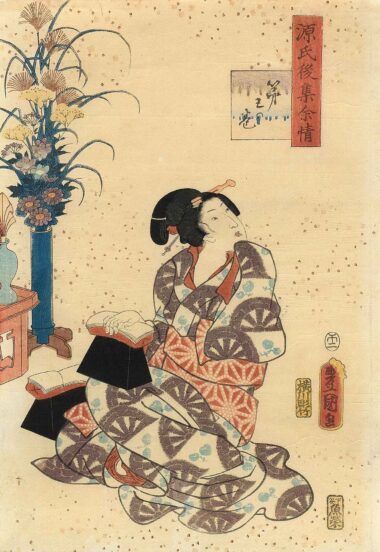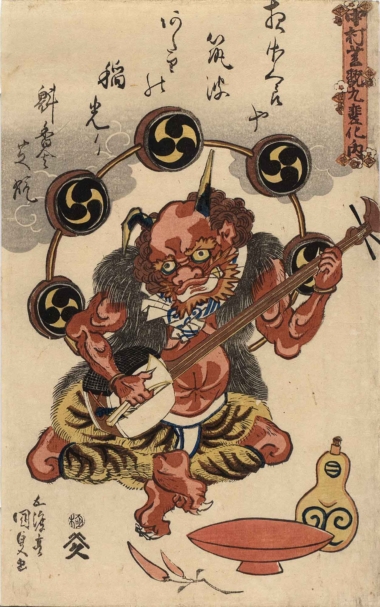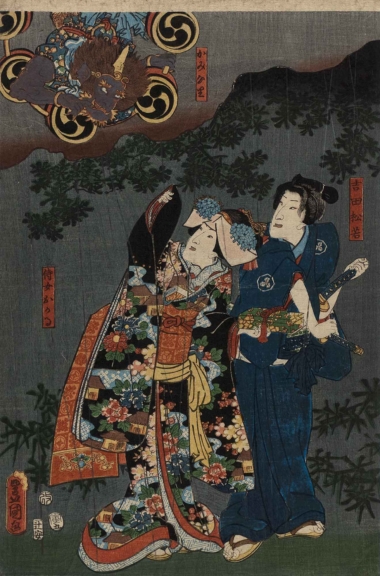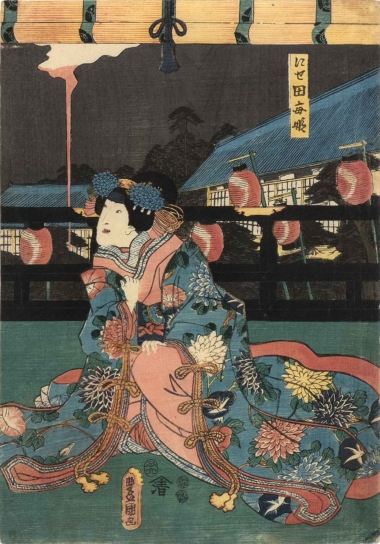


Utagawa KUNISADA (1786-um 1864/65) pupil of Utagawa Toyokuni (1769–1825) learned the genre of actor portraits and the actor under Toyokuni kabuki ‑Illustrations ( kabuki — bourgeois theater in which music and dance are integrated. The roles were played by male actors). For a long time Utagawa Kunisada was the focus of the Utagawa School and directed it for over 40 years. He left the most works of all painters. His depictions of beautiful women ( bijin-ga ) and his portraits of actors are among his best works. Kunisada is one of the most productive and commercially successful representatives of the Japanese woodblock print. In accordance with the current public taste, he further developed his style or changed it radically if necessary. Woodcut artists of his time were guided by his stylistic guidelines.
Utagawa KUNISADA (1786-um 1864/65) pupil of Utagawa Toyokuni (1769–1825) learned the genre of actor portraits and the actor under Toyokuni kabuki ‑Illustrations ( kabuki — bourgeois theater in which music and dance are integrated. The roles were played by male actors). For a long time Utagawa Kunisada was the focus of the Utagawa School and directed it for over 40 years. He left the most works of all painters. His depictions of beautiful women ( bijin-ga ) and his portraits of actors are among his best works. Kunisada is one of the most productive and commercially successful representatives of the Japanese woodblock print. In accordance with the current public taste, he further developed his style or changed it radically if necessary. Woodcut artists of his time were guided by his stylistic guidelines.






Recent Comments